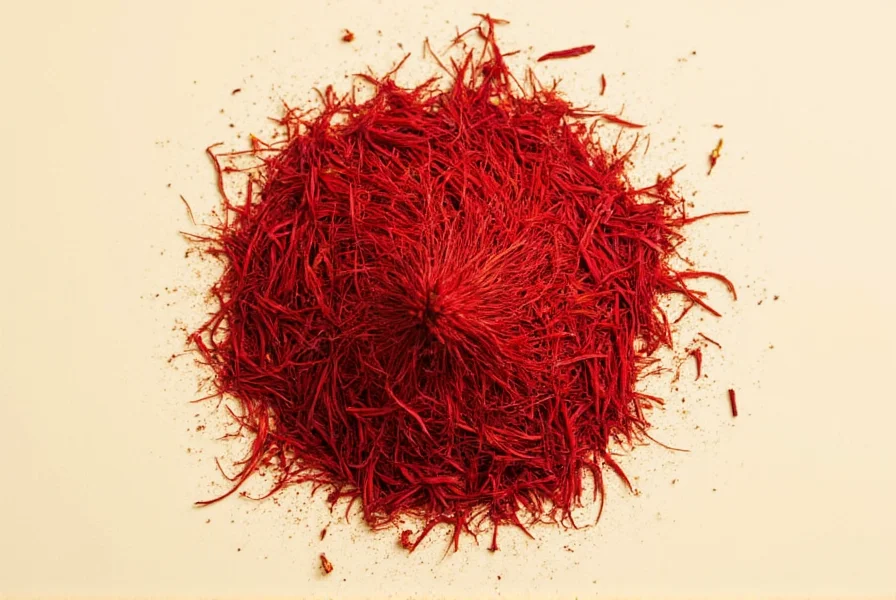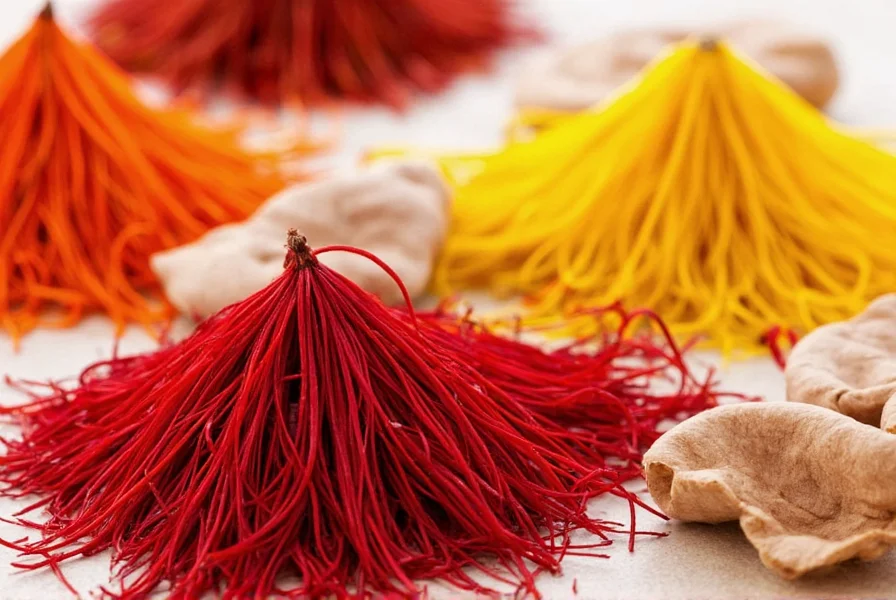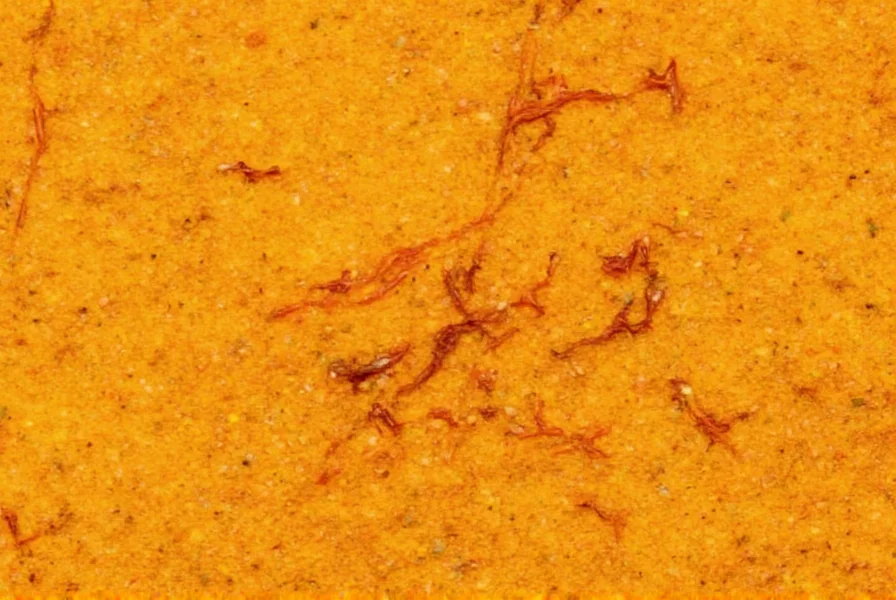Saffron threads display a distinctive deep red-orange to crimson color, with the highest quality saffron showing vibrant crimson hues at the tips that gradually fade to orange-red toward the base. This characteristic color comes from crocin, a carotenoid pigment that gives saffron its coloring properties.
The color of saffron is one of its most defining characteristics and serves as a primary indicator of quality and authenticity. Genuine saffron threads exhibit a rich, deep red-orange to crimson appearance, with the highest quality specimens showing vibrant crimson hues at the thread tips that gradually transition to orange-red toward the base. This distinctive coloring comes from crocin, the carotenoid pigment responsible for saffron's powerful coloring properties.
Understanding saffron's color characteristics is essential for both culinary professionals and home cooks who want to ensure they're using authentic, high-quality saffron. The intensity and consistency of saffron's color directly correlate with its quality, potency, and market value. When evaluating saffron, look for threads that maintain their vibrant color without excessive yellow or white portions, which indicate lower quality or adulteration.
The Science Behind Saffron's Distinctive Color
Saffron's remarkable coloring ability stems from crocin, a water-soluble carotenoid pigment that's exceptionally rare in nature. Unlike most carotenoids which are fat-soluble, crocin dissolves in water, which is why saffron can transform liquids with just a few threads. The concentration of crocin determines the intensity of saffron's color—higher quality saffron contains more crocin, resulting in a deeper, more vibrant red hue.
When saffron threads come into contact with liquid, they release crocin molecules that immediately begin coloring the surrounding medium. This is why authentic saffron will turn water or milk a rich yellow-orange within minutes, while inferior or fake saffron may produce a duller color or show signs of artificial dye bleeding too quickly.

Color Variations and Quality Indicators
Saffron color varies based on several factors including origin, harvesting methods, and processing techniques. The international ISO 3632 standard classifies saffron into four quality categories primarily based on color strength:
| Quality Grade | Coloring Strength (min) | Visual Characteristics |
|---|---|---|
| Category I | 190 | Deep, uniform crimson color throughout threads |
| Category II | 150 | Good red color with some orange portions |
| Category III | 110 | Mixed red and yellow portions, less vibrant |
| Category IV | 80 | Predominantly yellow with minimal red |
When examining saffron, look for these visual quality indicators:
- Uniform color distribution along the thread length
- Vibrant crimson tips (the "style" portion of the stigma)
- Minimal yellow or white portions (which indicate lower quality or inclusion of floral waste)
- Threads that maintain their integrity when touched (poor quality saffron may crumble easily)
How to Test Saffron Color Authenticity at Home
You can perform simple color tests to verify saffron authenticity using household items. The most reliable method involves the water test: place a few threads in a small amount of warm water or milk. Genuine saffron will gradually release its color over 15-20 minutes, creating a rich golden-yellow hue while the threads remain intact and retain some red color.
Be wary of saffron that immediately bleeds intense color (suggesting artificial dyes) or saffron that leaves the water completely clear (indicating very low quality or fake product). Another test involves placing threads on a paper towel dampened with water—authentic saffron will create a gradual yellow-orange halo around each thread.

Why Saffron Color Fades and How to Preserve It
Saffron's vibrant color is sensitive to environmental factors. Exposure to light, heat, and oxygen causes the crocin molecules to degrade, resulting in color fading and reduced potency. Properly stored saffron should maintain its rich color for 2-3 years, while poorly stored saffron may lose significant color intensity within months.
To preserve saffron's distinctive color:
- Store in an airtight container away from light
- Keep in a cool, dark place (refrigeration extends shelf life)
- Avoid exposure to humidity
- Buy whole threads rather than powder (powder degrades faster)
When saffron begins to lose its vibrant color, it also loses potency and flavor. Threads that have turned dull brown or lost their red-orange vibrancy will provide significantly less coloring power and aroma in your dishes.
Common Misconceptions About Saffron Color
Several misconceptions about saffron color persist among consumers. Many believe that the darkest red saffron is always the best, but extremely dark threads may indicate over-drying or improper processing. The ideal saffron shows a gradient from deep crimson to orange-red, not uniformly dark red.
Another common misunderstanding is that saffron should turn liquids bright red. In reality, authentic saffron creates a golden-yellow to light orange hue in liquids—the threads themselves remain red, but the coloring power produces yellow tones in food and beverages. If your saffron turns liquid bright red, it likely contains artificial coloring.











 浙公网安备
33010002000092号
浙公网安备
33010002000092号 浙B2-20120091-4
浙B2-20120091-4